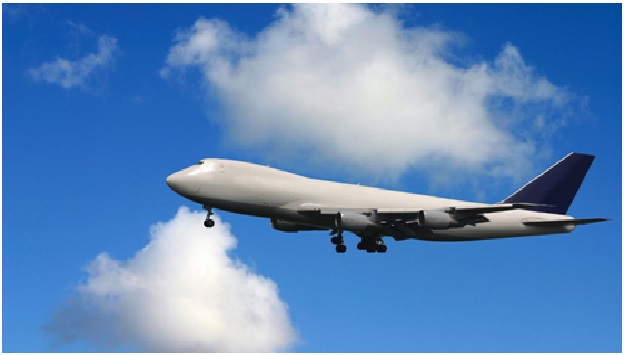Fast Moving Wind Make Aircraft Travel Greener
Scientists at the University of Reading have found that commercial flights between New York and London last winter could have used up to 16% less fuel if they had made better use of the fast-moving winds at altitude.

Figure 1: air craft can reduce emission.
Figure 1 shows that new satellites will soon allow transatlantic flights to be tracked more accurately while remaining a safe distance apart. This opportunity could allow aircraft to be more flexible in their flight paths and more immediate way of cutting emissions than through advances in technology.
Cathie Wells,said: “Current transatlantic flight paths mean aircraft are burning more fuel and emitting more carbon dioxide than they need to.
“Although winds are taken into account to some degree when planning routes, considerations such as reducing the total cost of operating the flight are currently given a higher priority than minimizing the fuel burn and pollution.”
Professor Paul Williams, an atmospheric scientist at the University of Reading and co-author of the new study, said: “Upgrading to more efficient aircraft or switching to biofuels or batteries could lower emissions significantly, but will be costly and may take decades to achieve. [1]
Wells and supervisor Professor Paul Williams studied 35,000 flights between New York and London in the winter of 2019-20. The authors compared the shortest route relative to the wind around them, using the Jetstream flying east, or avoiding it on the American-bound leg of the journey, with what the planes actually did.
The authors concluded some flights burned 16 percent more fuel than necessary, translating to an equivalent increase in environmental damage. Even the average figure was over 2 percent. The results may not translate perfectly to other routes, particularly those in north-south directions, but are unlikely to be unique.
Air travel contributes roughly 2.4 percent of greenhouse gas emissions, but is rising fast and is likely to prove much harder to address than other major emissions sources.[2]
The new study doesn’t show how well such wind surfing would work for all planes, in all skies and the world over. But it does suggest that making flight routes more flexible could cut both fuel use and CO2 in some places.
National Air Traffic Services (NATS) provides air-traffic control for the United Kingdom. It invited Wells to describe her new findings to them. Just one week after her team’s new study was published, NATS said it would temporarily disband its flight-paths system.
For now, they will be working with airlines and their Canadian counterpart (NAV CANADA) to allow airlines to choose routes that would best limit their fuel use. “This is a very exciting new twist,” says Wells. [3]
References:
- https://scitechdaily.com/airplanes-could-save-fuel-time-and-emissions-by-better-surfing-the-wind/
- https://www.iflscience.com/environment/surfing-the-wind-could-cut-longdistance-flights-environmental-costs/
- https://www.sciencenewsforstudents.org/article/innovation-greener-future-jet-airplane-travel-surfing-winds
Cite this article:
Sri Vasagi K (2022), Fast Moving Wind Make Aircraft Travel Greener, Anatechmaz, pp. 325

